The Sparkling Gourami (Trichopsis pumila) is an absolutely mesmerizing and extraordinary creature that rules the immense underwater realm. In spite of its petite stature, this enchanting fish, a near relation to the Betta fish and a distinguished representative of the Osphronemidae family, has managed to captivate fish enthusiasts worldwide due to its breathtaking allure and captivating traits.
Table of Contents
Hailing from the slow-moving streams and rice paddies of Southeast Asia, particularly in Thailand, Cambodia, and Vietnam, the Sparkling Gourami has adapted to thrive in its natural habitat. As a mid-dweller, this fish navigates through the dense vegetation, foraging for small insects, crustaceans, and algae to satisfy its omnivorous appetite.
Interestingly, the Sparkling Gourami is known by various names in the aquarium trade, such as the Pygmy Gourami, Pygmy Croaking Gourami, or simply the Sparkling Gourami. These monikers not only reflect its petite size but also allude to its unique ability to produce a soft croaking sound, a trait shared with its larger cousin, the Croaking Gourami.
Research journals have delved into the intriguing aspects of the Sparkling Gourami’s life, revealing a wealth of information about its behavior and preferences. Studies have shown that these fish thrive in well-planted aquariums with gentle water flow, mimicking their natural habitat. The ideal water parameters for Sparkling Gouramis range from a pH of 6.0 to 7.5, with temperatures between 22°C and 28°C (72°F to 82°F).
One of the most appealing aspects of the Sparkling Gourami is its peaceful and sociable nature. Unlike some of its more aggressive relatives, this fish exhibits a calm temperament, making it an excellent choice for community tanks. When kept in groups of six or more, Sparkling Gouramis form hierarchies and engage in fascinating social interactions, adding a dynamic element to any aquarium.
Throughout history, the Sparkling Gourami has been a subject of fascination for both aquarists and researchers alike. Its discovery in the early 20th century opened up new avenues for studying the diverse world of labyrinth fish, a group known for their ability to breathe atmospheric air using a specialized labyrinth organ.
Fun facts about the Sparkling Gourami abound, further enhancing its allure. Did you know that males of this species are known to build bubble nests, similar to Bettas, to protect their eggs and fry? Additionally, when content, Sparkling Gouramis may exhibit a mesmerizing “sparkling” effect, as light reflects off their iridescent scales, creating a captivating display.
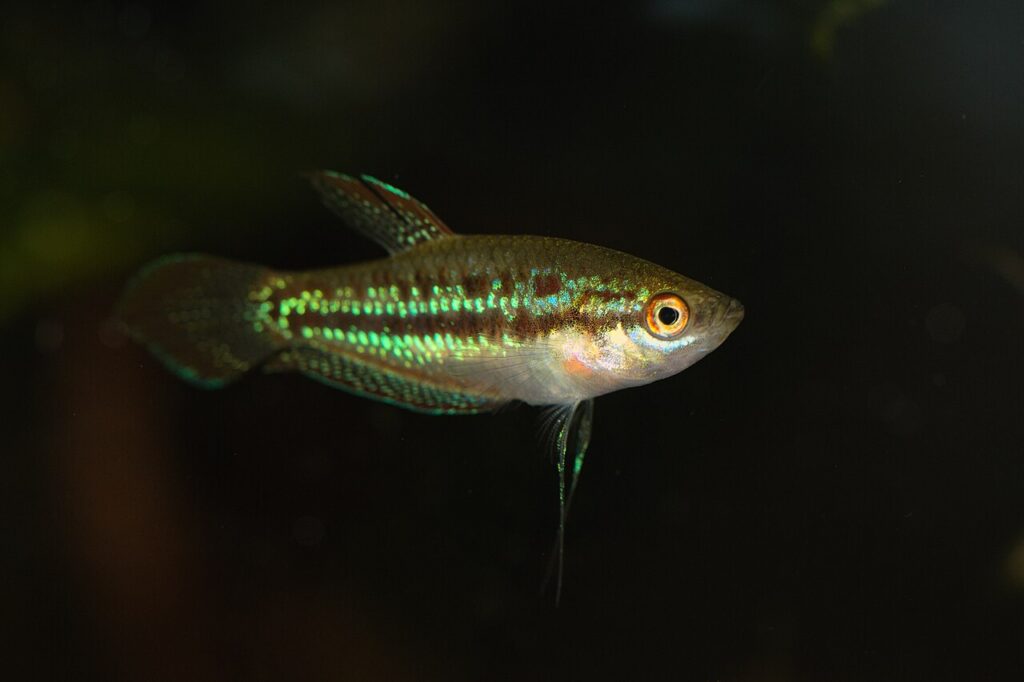
Key Information
The Sparkling Gourami (Trichopsis pumila) is an awe-inspiring fish that showcases a stunning array of colors. With its predominantly pale pink to light brown body, this fish boasts mesmerizing vertical stripes in iridescent blue-green that truly come to life under the right lighting. Completing its enchanting appearance are its transparent fins, subtly tinted with hints of blue or green, adding to its captivating visual charm.
| Family | Osphronemidae |
| Origin | Southeast Asia (Thailand, Cambodia, Vietnam) |
| Price | $3 to $5 per fish |
| Common Names | Sparkling Gourami, Pygmy Gourami, Pygmy Croaking Gourami |
| Variants | None known |
| Ideal Tank Size | 10 gallons or larger |
| Water Parameters | pH: 6.0-7.5, Temperature: 22-28°C (72-82°F) |
| Lifespan | 4 to 5 years |
| Full Size | 4 cm (1.6 inches) |
| Natural Environment | Slow-moving streams, rice paddies, and swamps |
| Behavior | Peaceful, sociable, and playful |
| Habitat Preference | Mid-level, among dense vegetation |
| Aquarium Decoration | Heavily planted with hiding spots and gentle water flow |
| Ideal Tank Mates | Other peaceful, small fish (e.g., Rasboras, small Tetras, and Corydoras) |
| Fish to Avoid | Large, aggressive fish that may bully or eat them |
| Best Foods/Diet | Omnivorous; small live or frozen foods, high-quality flake or pellet food |
| Disease | Susceptible to common freshwater diseases if water quality is poor |
| Sex-Switch | No |
| Gender Differences | Males are more slender and have a pointed dorsal fin; females are slightly larger and rounder |
| Care Level | Easy |
| Breeding Level | Moderate; bubble nest builders |
Ideal Tank Mates
To find the perfect companions for the Sparkling Gourami (Trichopsis pumila), it is crucial to select fish that not only match its water requirements, but also have a compatible temperament and habitat preferences. The Sparkling Gourami is a tranquil and friendly species that flourishes in an aquarium filled with lush vegetation and a mild water current. Thanks to its diminutive size and peaceful demeanor, it is an exceptional choice for a community tank, where it can peacefully coexist with other like-minded fish.
To create a harmonious and visually appealing aquarium, it’s important to select tank mates that not only coexist peacefully with the Sparkling Gourami but also add variety in terms of color, size, and swimming levels. By carefully choosing compatible species, you can establish a balanced and thriving ecosystem where each fish contributes to the overall health and aesthetics of the aquarium.
Here are 15 ideal tank mates for the Sparkling Gourami, along with detailed explanations of why they are compatible:
1. Neon Tetras (Paracheirodon innesi)
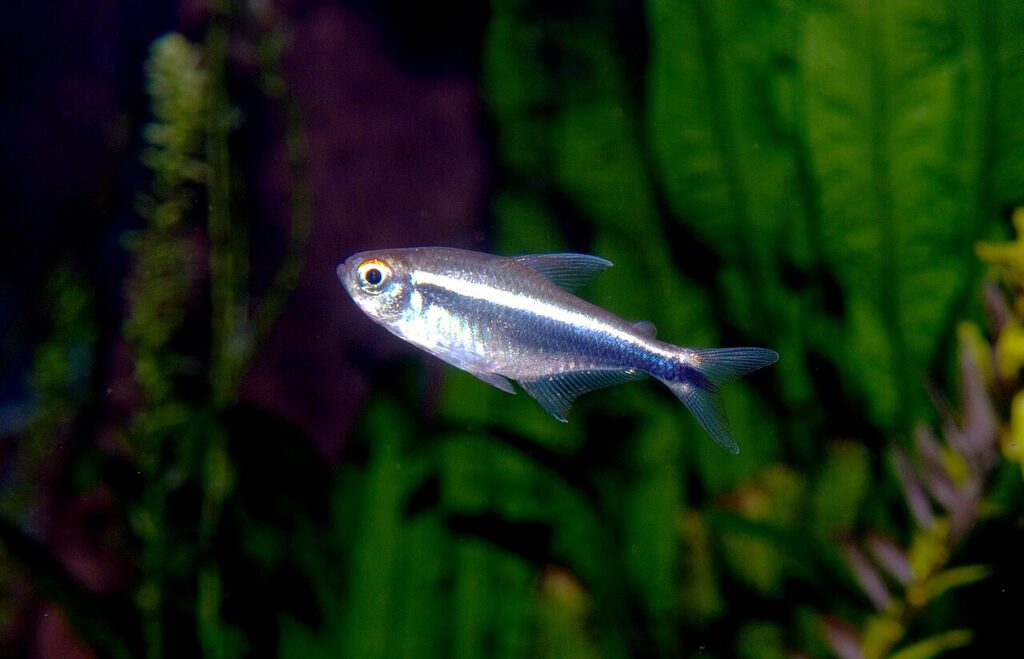
Neon Tetras are a popular choice for community tanks due to their small size, peaceful nature, and striking iridescent blue and red coloration. These active swimmers occupy the mid to upper levels of the aquarium, providing a dazzling display without interfering with the Sparkling Gourami’s space. Neon Tetras prefer similar water parameters and enjoy the presence of plants, making them an excellent complement to the Sparkling Gourami’s habitat.
2. Cherry Barbs (Puntius titteya)
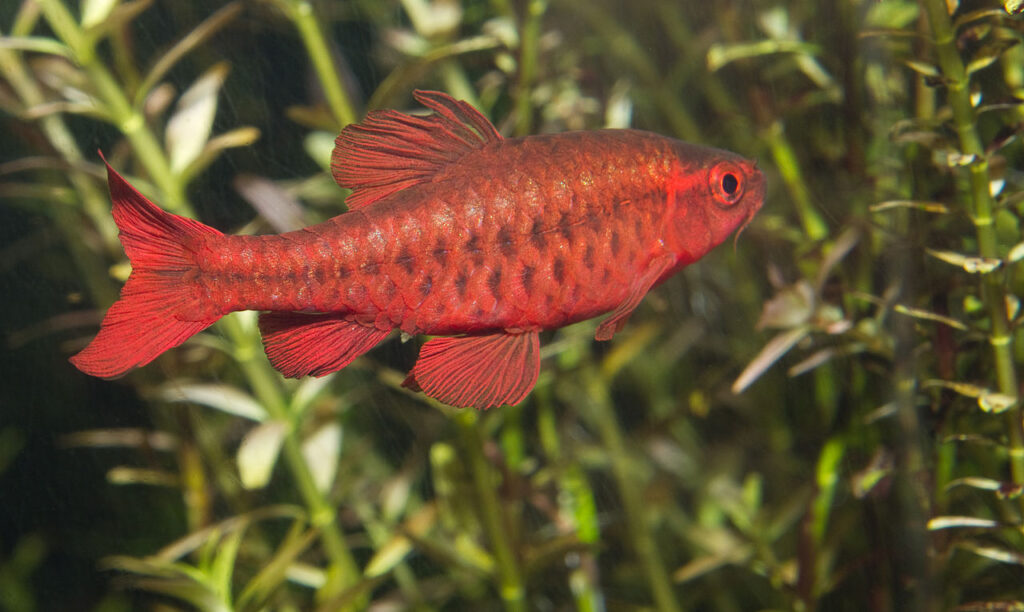
Cherry Barbs are small, colorful fish that add a vibrant splash of red to the aquarium. Their peaceful temperament and active swimming behavior make them a delightful addition to a Sparkling Gourami tank. Cherry Barbs are known for their hardiness and adaptability, thriving in a wide range of water conditions. They are omnivorous and will readily accept various foods, ensuring they do not compete with the Sparkling Gourami for resources.
3. Kuhli Loaches (Pangio kuhlii)
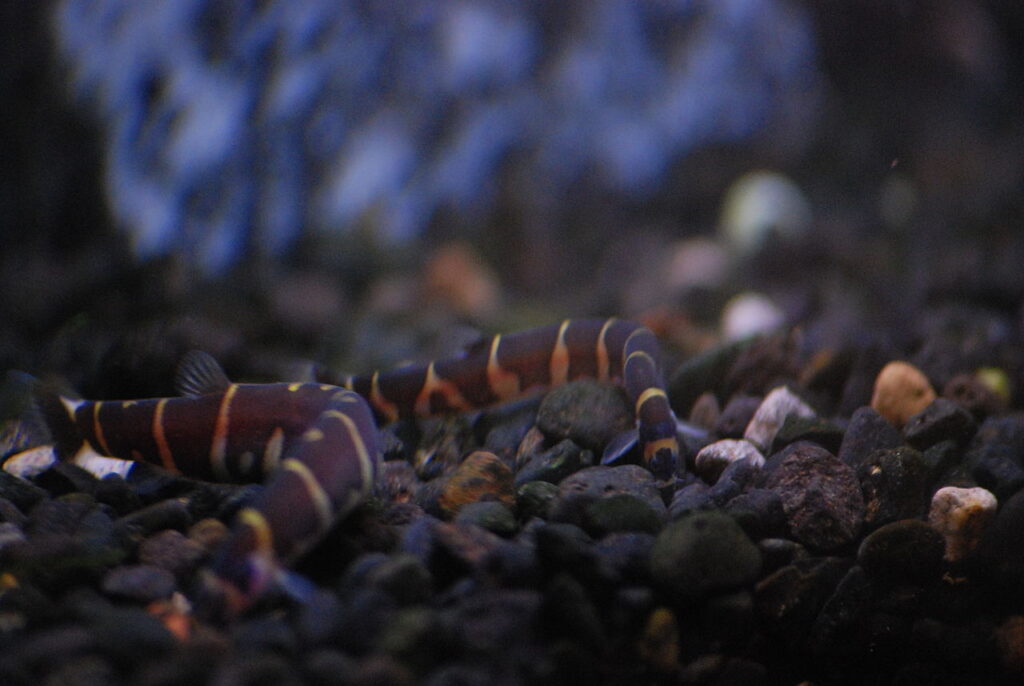
Kuhli Loaches are fascinating, eel-like fish that inhabit the bottom of the aquarium. With their unique appearance and nocturnal habits, they add an element of intrigue to the tank without disturbing the Sparkling Gourami. Kuhli Loaches are peaceful scavengers that help keep the substrate clean by foraging for leftover food and debris. They appreciate a well-planted aquarium with hiding spots, making them an ideal match for the Sparkling Gourami’s preferred habitat.
4. Ember Tetras (Hyphessobrycon amandae)
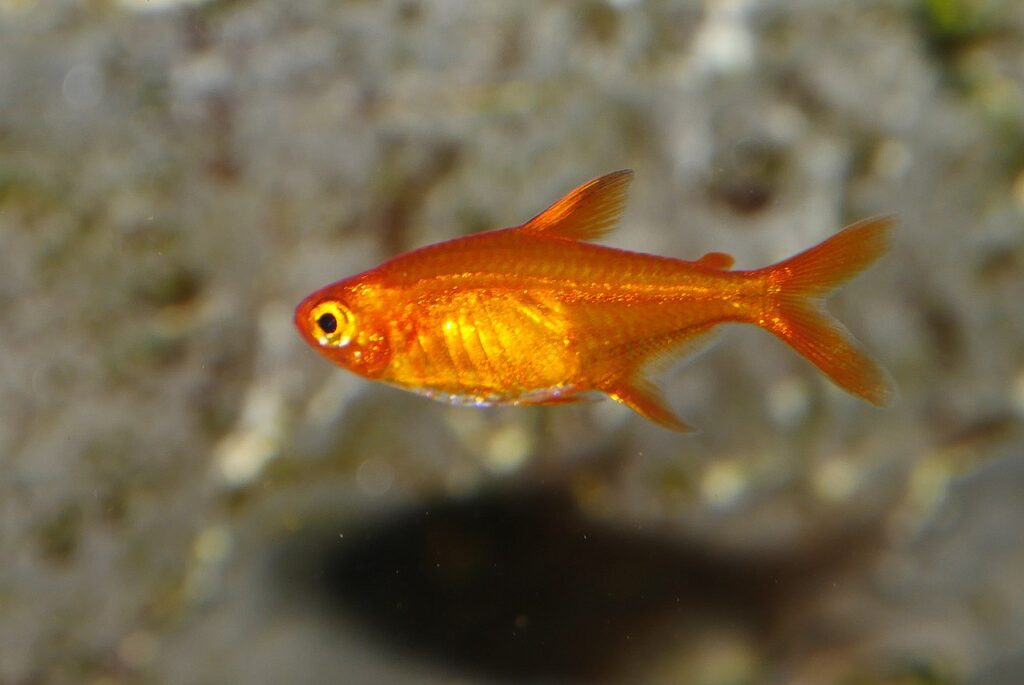
Ember Tetras are tiny, fiery-colored fish that bring a warm glow to the aquarium. Their peaceful nature and small size make them an excellent companion for Sparkling Gouramis. Ember Tetras occupy the mid to upper levels of the tank, swimming in tight schools that create a mesmerizing display. They share similar water preferences with Sparkling Gouramis and appreciate a well-planted aquarium, ensuring a compatible and visually appealing environment.
5. Pygmy Corydoras (Corydoras pygmaeus)
Pygmy Corydoras are miniature catfish that dwell at the bottom of the aquarium. These adorable fish are peaceful, active, and highly social, often seen playfully darting around the tank. Pygmy Corydoras are excellent scavengers, helping to maintain a clean substrate by consuming leftover food particles. Their small size and non-aggressive nature make them a perfect match for Sparkling Gouramis, as they occupy different levels of the tank and do not compete for resources.
6. Harlequin Rasboras (Trigonostigma heteromorpha)

Harlequin Rasboras are striking fish with a copper-colored body and a distinctive black triangular patch. These peaceful and active swimmers are well-suited for a community tank with Sparkling Gouramis. Harlequin Rasboras prefer similar water conditions and thrive in a well-planted aquarium, adding visual interest to the mid-level of the tank. Their calm demeanor and schooling behavior make them a harmonious addition to a Sparkling Gourami tank.
7. Endler’s Livebearers (Poecilia wingei)
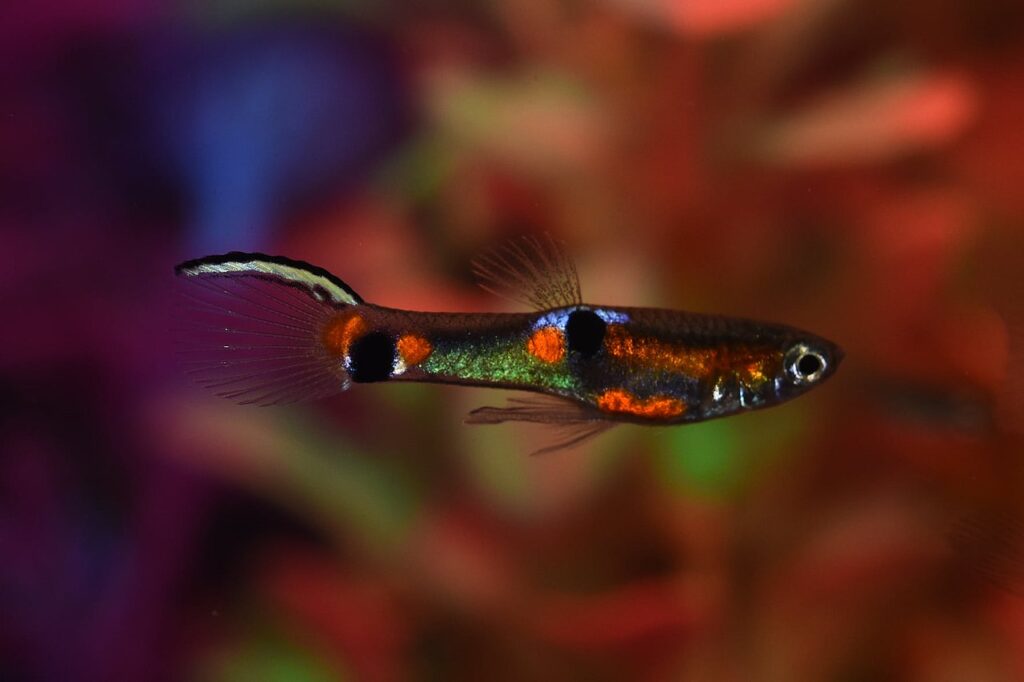
Endler’s Livebearers are small, colorful fish that bring a vibrant splash of life to the aquarium. These active swimmers are peaceful and adapt well to a variety of water conditions. Endler’s Livebearers occupy the upper levels of the tank, displaying their stunning colors and lively behavior. They are easy to care for and do not pose a threat to Sparkling Gouramis, making them an excellent choice for a community tank.
8. Otocinclus Catfish (Otocinclus spp.)
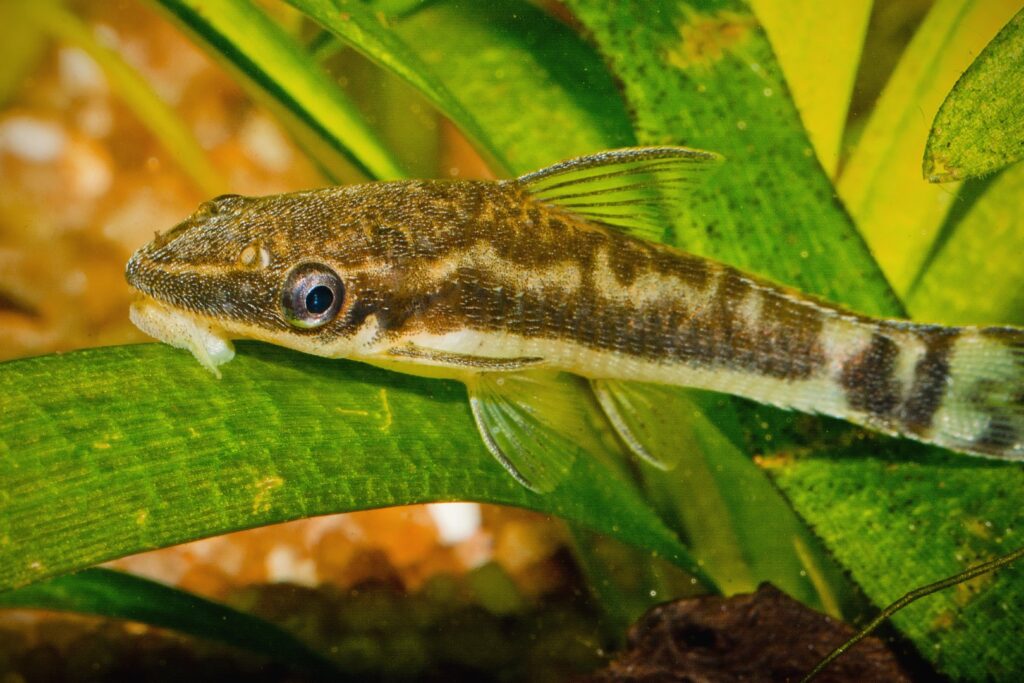
Otocinclus Catfish, also known as Otos, are small, algae-eating fish that are invaluable in maintaining a clean aquarium. These peaceful bottom-dwellers are constantly on the move, grazing on algae and keeping the tank’s surfaces spotless. Otos are gentle and unobtrusive, making them an ideal companion for Sparkling Gouramis. They prefer similar water conditions and appreciate a well-planted tank, contributing to a balanced and healthy ecosystem.
9. Chili Rasboras (Boraras brigittae)
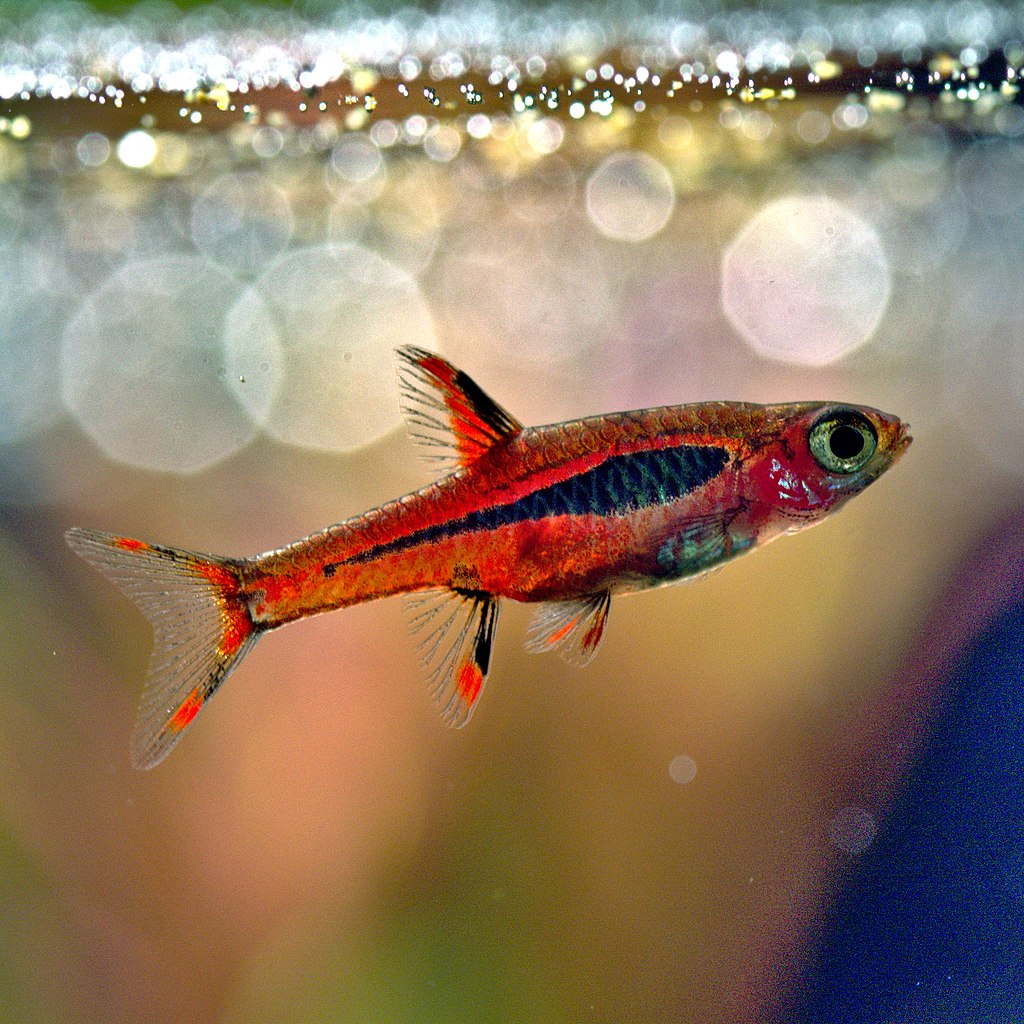
Chili Rasboras are tiny, vibrant fish with a striking red coloration. These peaceful nano fish are perfect tank mates for Sparkling Gouramis due to their small size and calm temperament. Chili Rasboras occupy the mid to upper levels of the aquarium, adding a bright pop of color to the tank. They thrive in similar water conditions and enjoy the presence of plants, creating a visually stunning and harmonious community with Sparkling Gouramis.
10. Dwarf Corydoras (Corydoras hastatus)
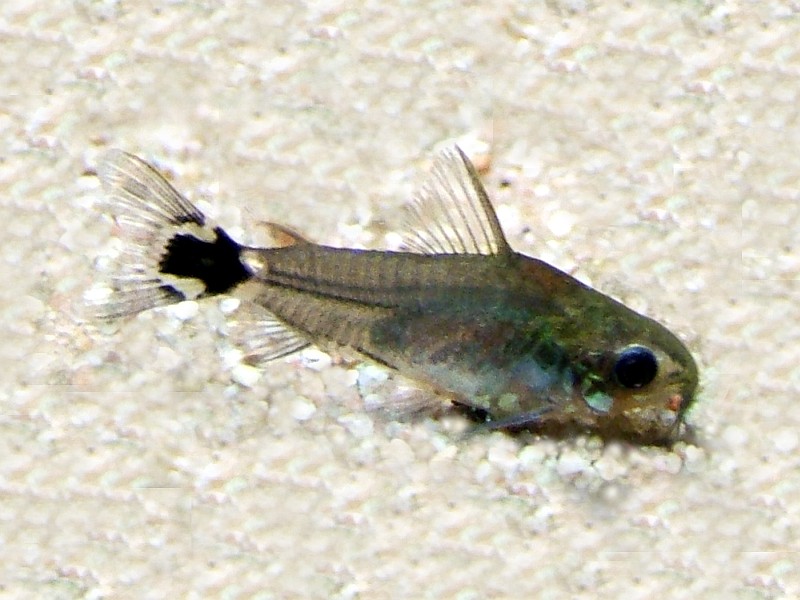
Dwarf Corydoras are miniature catfish that are well-suited for smaller aquariums. These peaceful bottom-dwellers are active and social, often seen playfully scooting along the substrate. Dwarf Corydoras help maintain a clean tank by scavenging for leftover food and debris. Their small size and non-aggressive nature make them an excellent companion for Sparkling Gouramis, as they occupy different levels of the tank and contribute to a balanced ecosystem.
11. White Cloud Mountain Minnows (Tanichthys albonubes)
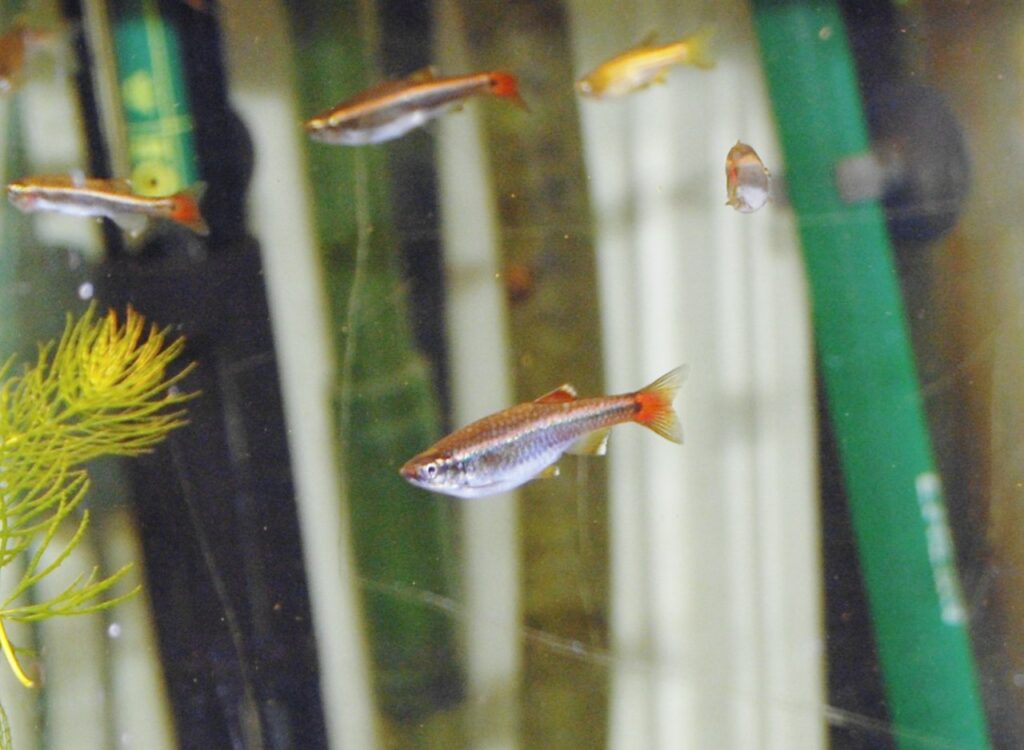
White Cloud Mountain Minnows are hardy, adaptable fish that thrive in a wide range of water conditions. These peaceful swimmers are characterized by their silvery-white bodies and striking red fins. White Cloud Mountain Minnows occupy the mid to upper levels of the tank, adding a touch of elegance and motion to the aquarium. Their calm demeanor and schooling behavior make them a compatible tank mate for Sparkling Gouramis.
12. Pygmy Hatchetfish (Carnegiella myersi)
Pygmy Hatchetfish are unique, surface-dwelling fish with a distinctive hatchet-shaped body. These peaceful fish are known for their ability to dart above the water’s surface to catch small insects. Pygmy Hatchetfish occupy the top level of the aquarium, providing an interesting visual contrast to the Sparkling Gourami’s mid-level swimming. They prefer similar water conditions and add a fascinating dynamic to the tank without interfering with the Sparkling Gourami’s space.
13. Dwarf Rasboras (Boraras maculatus)
Dwarf Rasboras, also known as Spotted Rasboras, are tiny, peaceful fish with a charming appearance. These active swimmers have a translucent body adorned with black spots, creating a delicate and captivating display. Dwarf Rasboras are well-suited for a Sparkling Gourami tank due to their small size, peaceful nature, and compatible water preferences. They occupy the mid to upper levels of the aquarium, adding visual interest without overwhelming the tank.
14. Cherry Shrimp (Neocaridina davidi)
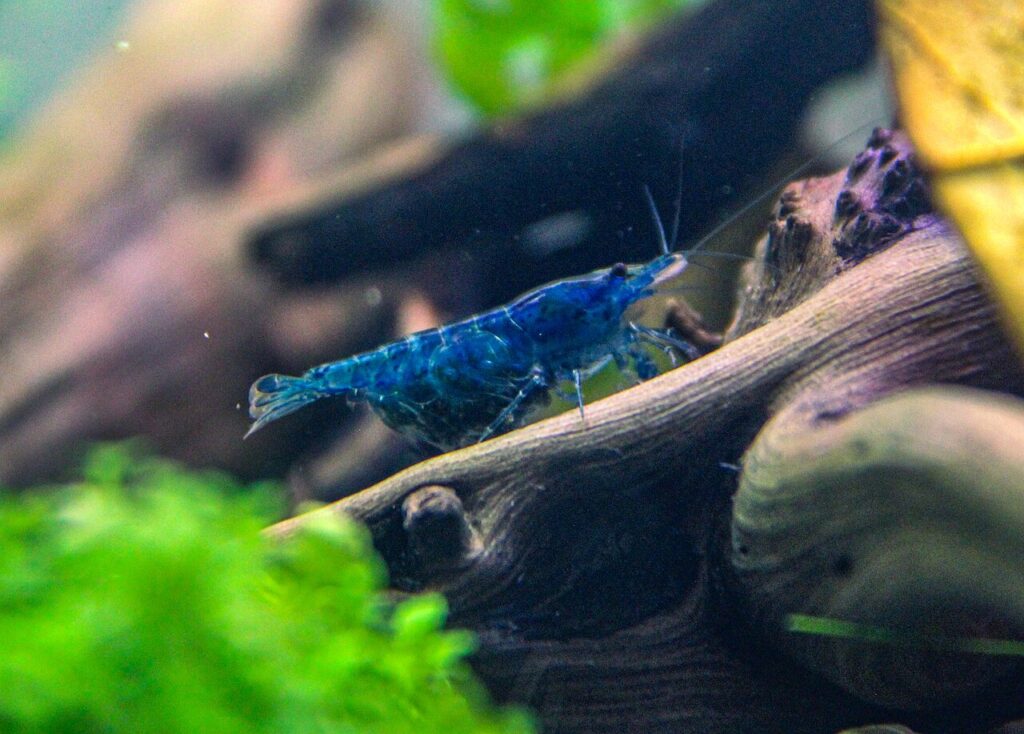
Cherry Shrimp are small, colorful invertebrates that make a fascinating addition to a Sparkling Gourami tank. These peaceful and industrious shrimp are excellent scavengers, helping to keep the aquarium clean by consuming algae and leftover food particles. Cherry Shrimp come in a variety of vibrant colors, from deep red to yellow and blue, adding a unique visual element to the tank. They are harmless to Sparkling Gouramis and thrive in similar water conditions, creating a engaging and low-maintenance community.
15. Celestial Pearl Danios (Danio margaritatus)
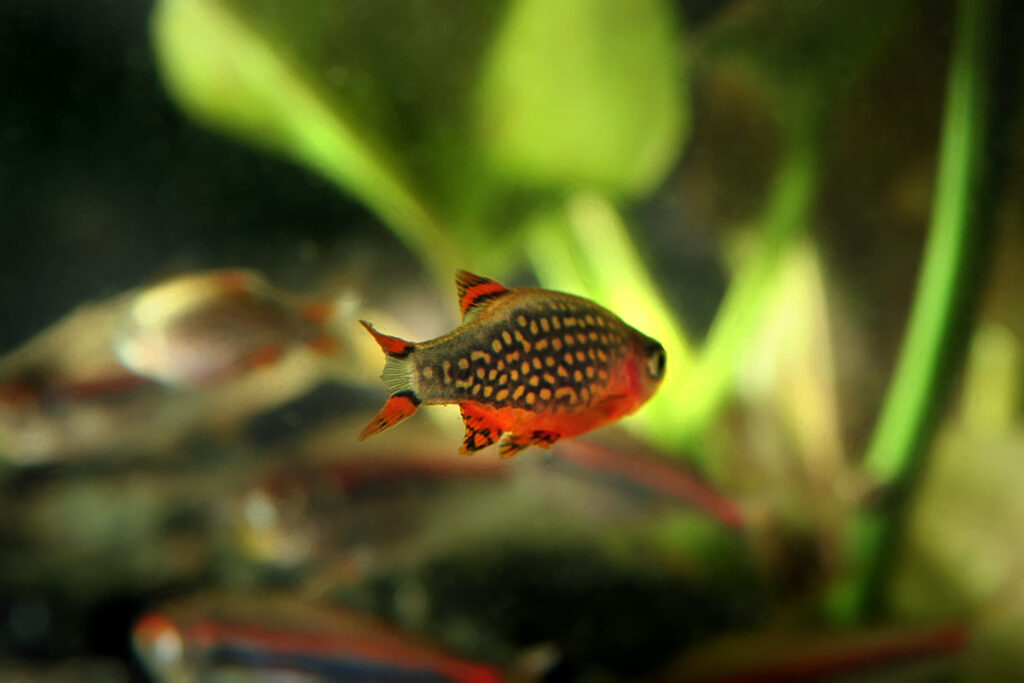
Celestial Pearl Danios, also known as Galaxy Rasboras, are small, stunningly patterned fish that make a beautiful addition to a Sparkling Gourami tank. These peaceful swimmers have a iridescent, pearly body adorned with dark spots, resembling a starry night sky. Celestial Pearl Danios occupy the mid to upper levels of the aquarium, gracefully darting among the plants. They share similar water preferences with Sparkling Gouramis and contribute to a visually captivating and harmonious community.
FAQs
How many Sparkling Gouramis should I keep together?
It is recommended to keep Sparkling Gouramis in groups of at least six individuals. They are social fish that thrive in the presence of their own species, forming a hierarchy and engaging in fascinating interactions. Keeping them in groups helps reduce stress and promotes natural behaviors.
Can Sparkling Gouramis be kept in a nano tank?
Yes, Sparkling Gouramis are well-suited for nano tanks due to their small size. A well-planted tank with a minimum volume of 10 gallons can comfortably accommodate a group of these fish. However, it’s essential to maintain stable water parameters and perform regular water changes to ensure their health in smaller aquariums.
Are Sparkling Gouramis jumpers?
Sparkling Gouramis are not known for being prolific jumpers, but like most fish, they may jump if startled or if water conditions are unsuitable. To prevent any accidents, it’s advisable to keep the aquarium covered with a well-fitting lid or hood.
How often should I feed my Sparkling Gouramis?
Sparkling Gouramis should be fed small amounts of food two to three times a day. Offer a variety of high-quality foods, such as small live or frozen foods (e.g., daphnia, artemia, bloodworms) and high-quality flake or pellet food designed for small tropical fish. Avoid overfeeding, as it can lead to health issues and water quality problems.
Are Sparkling Gouramis sensitive to water changes?
Sparkling Gouramis can be sensitive to sudden changes in water parameters. When performing water changes, it’s crucial to ensure that the new water closely matches the existing tank water in terms of temperature, pH, and hardness. Gradual acclimation is recommended to minimize stress on the fish.
Can Sparkling Gouramis be bred in captivity?
Yes, Sparkling Gouramis can be bred in captivity with proper care and conditions. They are bubble nest builders, with males constructing nests at the water’s surface using air bubbles and saliva. Providing a calm environment with floating plants and a slightly acidic pH can encourage spawning behavior.
Do Sparkling Gouramis have any special lighting requirements?
Sparkling Gouramis do not have any specific lighting requirements, but they do appreciate a well-planted aquarium with subdued lighting. Bright, intense lighting can cause stress and may lead to hiding behavior. A combination of low to moderate lighting and floating plants can create a comfortable environment for these fish.
Are Sparkling Gouramis prone to any specific diseases?
Like most freshwater fish, Sparkling Gouramis can be susceptible to common diseases such as ich, fin rot, and bacterial infections if water quality is poor or if they are subjected to stress. Maintaining stable water parameters, providing a balanced diet, and quarantining new fish can help prevent and manage disease outbreaks.
Can Sparkling Gouramis be kept with shrimp or snails?
Sparkling Gouramis can be kept with peaceful, small shrimp species such as Cherry Shrimp or Amano Shrimp. They generally ignore adult shrimp but may consume newly hatched shrimplets. Snails, such as Nerite Snails or Mystery Snails, can also make good tank mates as they help control algae growth and are too large to be considered prey.
How can I tell if my Sparkling Gouramis are healthy?
Healthy Sparkling Gouramis should exhibit vibrant coloration, clear eyes, and active swimming behavior. They should have a good appetite and interact peacefully with their tank mates. Signs of illness may include lethargy, loss of appetite, discoloration, or visible wounds or abnormalities on the body or fins. Regular observation of your fish can help detect any potential health issues early on.